This article will walk you through customizing and adding widgets to your maintenance dashboard.
Index
Main Dashboard
- To view your maintenance dashboard, you can click the maintenance tab and then click "Dashboard". This will show you the default maintenance dashboard that you have configured. This dashboard is on a per-user basis, so all users can customize this dashboard to their needs.

Configuring your Dashboard
- To start configuring your dashboard, you can click the "Configure Dashboard" button in the top right of your screen.

- This will allow you to edit the current widgets you have selected on the dashboard. The first thing you will notice is an "X" in the top right of every widget. You can click this to remove any widgets from your dashboard. Make sure to click the save button to confirm any changes made.

- You also have the option to click and drag the arrow in the bottom right corner of every widget. This will allow to to edit the scale of the widget if you would like to make it smaller or larger. Make sure to click the save button to confirm any changes made.

- If you click anywhere on the widget, you will also be able to drag and drop it to different areas. This will allow you to move the widgets around to any position you prefer. Make sure to click the save button to confirm any changes made.

- If you ever need to edit any of your current widgets, you can click the gear icon in the top right of the widget. This will allow you to edit the current settings and filters that are being displayed.

Adding Widgets
- You can add an assortment of different maintenance widgets by clicking the "Add Widget" button.

- From this page, you can choose to add widgets from the following categories:

- Work Order List- Allows you to sort work orders by different columns (work order number, date created, days open, etc.) and filter by user-based parameters (assignee, work order statuses, etc.).


- Work Order Group- Allows you to build a graph (pie, bar, table) for many different metrics on your work orders. Also, it allows you to filter for the specific work orders you are looking for.
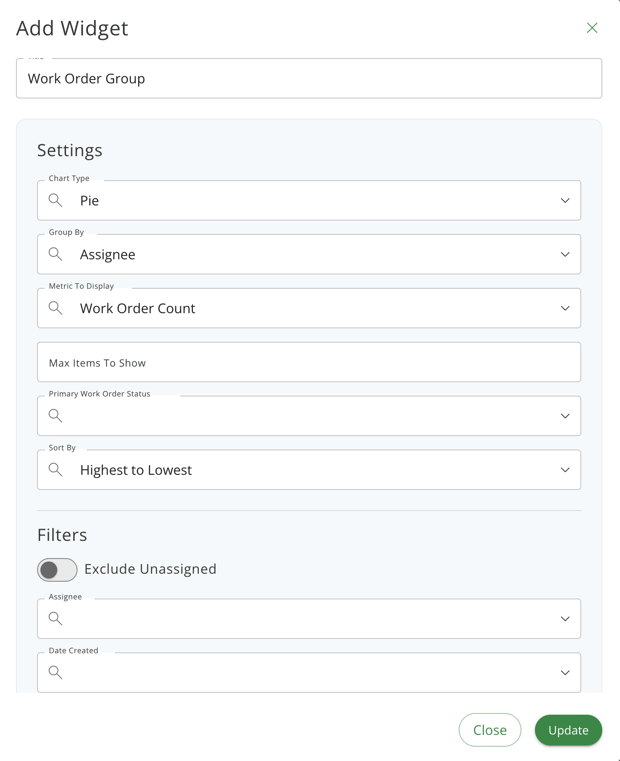

- Work Order List- Allows you to sort work orders by different columns (work order number, date created, days open, etc.) and filter by user-based parameters (assignee, work order statuses, etc.).
-
- Work Orders By Month- Allows you to display certain metrics for certain work order statuses. Also allows you to filter by certain assignees or creation dates.
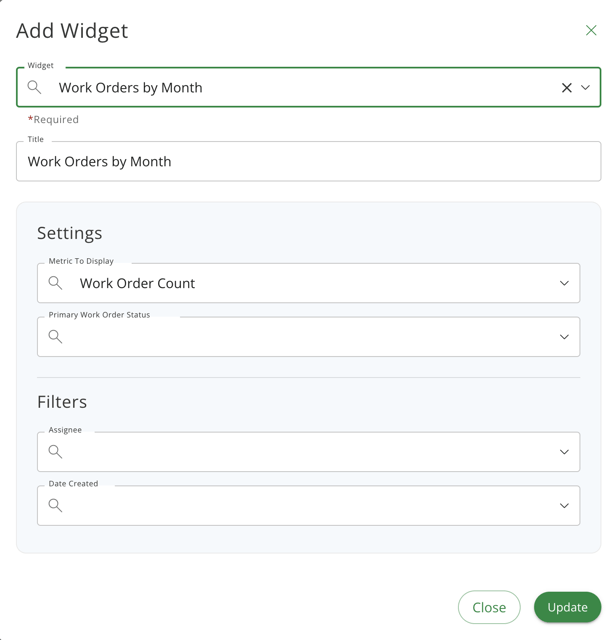
- Work Orders By Month- Allows you to display certain metrics for certain work order statuses. Also allows you to filter by certain assignees or creation dates.
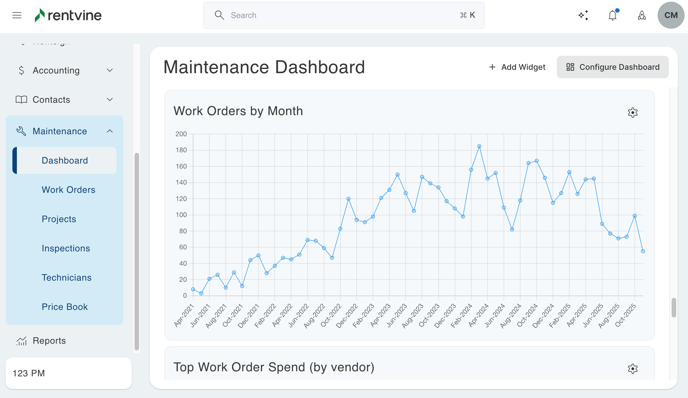
-
- Work Order Statistics- Allows you to select between a wide range of statistics (average cost, pending work orders, open work orders, average days to close, etc.) and filter by the assignee, date created, and date closed.
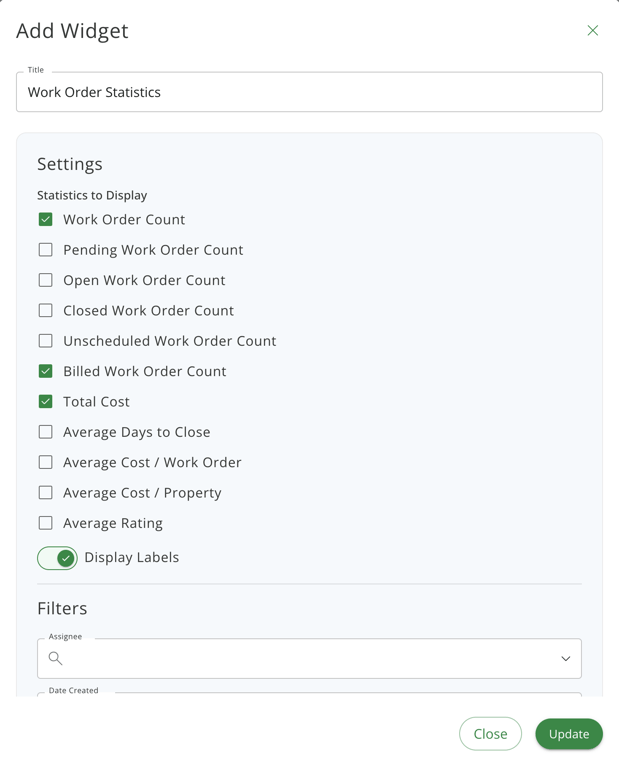

Vendor List- Allows you to add important vendor information to easily access, sort by different parameters, and filter by vendor insurance expiration dates.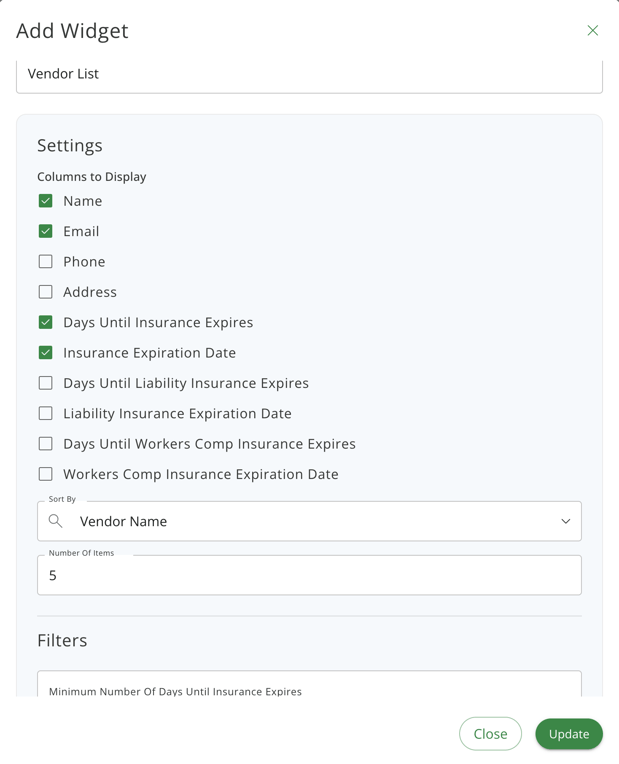
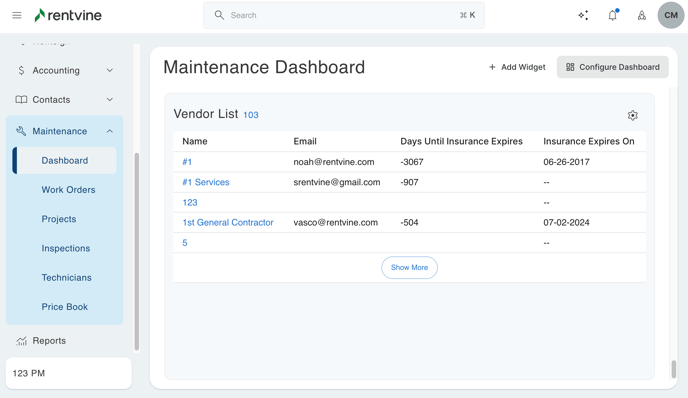
- Work Order Statistics- Allows you to select between a wide range of statistics (average cost, pending work orders, open work orders, average days to close, etc.) and filter by the assignee, date created, and date closed.
Please note that you will have widgets labeled as "Custom". These custom labels are the default widgets that can be customized from scratch. You will also have other widgets that are not labeled that already have custom filters and statuses set. These are suggested widgets for useful information.
Example Widget Setup
- For this example, we will go to the add widget screen and add a "Work Order List" widget. In here, you will see the following settings and filters:
- Title- This is where you can put a custom name that will display on the widget.
- Columns to Display- This will show all the columns that can be added to the widget. This includes things like property, date created, days open, and status.
- Sort By- This will be how you would like the information to display. This includes date created (oldest to newest), days open (highest to lowest), etc.
- Number of Items- This will be the number of rows that display on the actual widget before you have to click "Show More".
- Filters- These will be important filters that every user can use to show data that is useful for them.
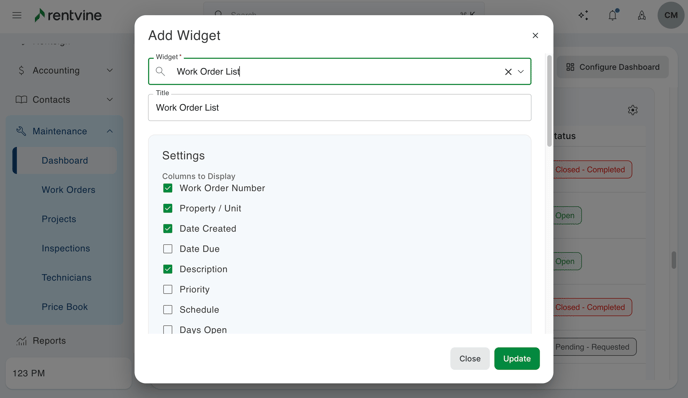

- When you are complete with your settings and filters, make sure to click "Update" to add the widget to your dashboard. This will add the widget to the bottom of your dashboard. If you would like to edit the size or position of this widget, you can follow the "Configuring Dashboard" section of this article.
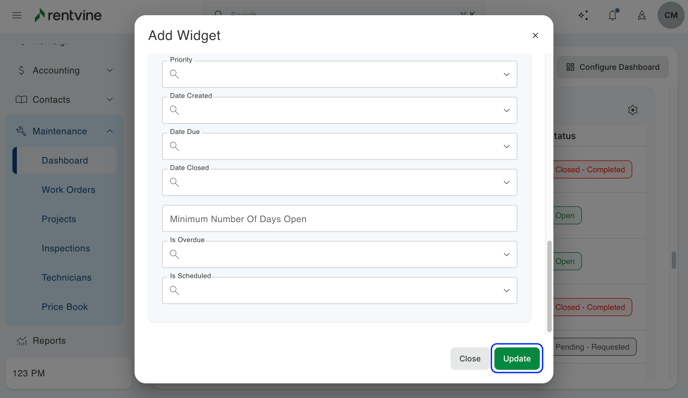

Please note that every category will have its unique filters and settings. You can also create multiple widgets using the same category with different settings/filters.
All of these dashboard widgets are available on your global dashboard. For more information regarding your global dashboard, please view this article.
- If you need any further assistance with creating custom application widgets, please don't hesitate to contact our support team at support@rentvine.com. We are here to help you with any customizations you may require.
